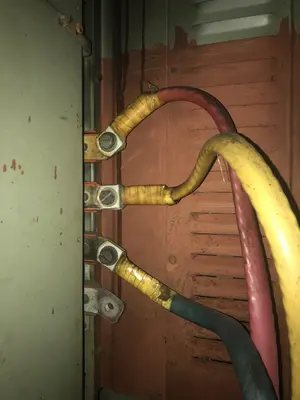DOL starters are one of the most widely used starters in motors of low to medium power ratings. DOL starters are preferred due to their simple design, low cost, and ease of maintenance.
Why Maintenance of the DOL Starter is Mandatory After Every Run?
Maintenance of the DOL starter is necessary to keep the starter healthy and make it ready to take in line or run the motor at any time.
Lack of maintenance may cause loose connections in cable joints, absorption of dust, dirt in the contacts, sulphation in the connecting joints, insulation damage, etc.
These affect the healthiness of the starter and make it unreliable to run the motor when required.
In my plant, I always make sure to do maintenance of starters at least once a week or after continuously running the motors for 3-5 days. This helps me keep the starters healthy and ready for taking in line whenever necessary.
How to do Maintenance of DOL Starters?
The DOL starter is one of the simplest motor starters. The power circuit has only an Isolator, a Contactor, and an Overload Relay.
The control circuit has Control Fuses, NO/NC Contacts, Contactor Coil, and ON & OFF push buttons.
The measuring circuit has Current Transformers and Ammeters.
Here is how to do the maintenance of a DOL Starter after every run of the motor.
#1 Checking Finger Contacts of the Contactor
The finger contacts of the contactor have to withstand many sparkings during the starting and stopping of motors. Because of this a black sparking residue forms in the finger contacts as shown in the photo below.


If these contacts are not cleaned, there may not be a proper connection between the moving and fixed contacts, because of this more sparking will occur which will finally damage the contactor.
Therefore, I make sure that the finger contacts are properly cleaned with contact cleaner after every run of the motor.
#2 Checking the Tightness of the Nuts and Bolts
The nuts and bolts that connect the Isolator, Contactor, and Overload Relay sometimes become loose due to the vibration of the contactor during continuous operation.

These loose connections if not properly tightened, may lead to sparking and may damage other parts of the starter.
Therefore, I make sure to check the tightness of these nuts and bolts at least once a week to ensure a firm connection.
#3 Checking the Power Cable Connections and Lugs
The lugs of cables also sometimes become loose due to improper jointing. These may lead to the rise of hotspots at the cable ends and may further damage the cable.

Also, the loose connections may lead to sparking in the joints.
Therefore checking the cable lugs and their termination at the end is necessary after every run of the motor.
Also, it is necessary to check the temperature at the cable ends using laser guns.
Generally, the temperature of the cable will be equal to or slightly higher than the ambient temperature. If the temperature is much higher than the ambient temperature, then there may be a loose connection at the cable ends which needs to be rectified at the earliest.
#4 Testing of Overload Relays
As the Overload Relay is the only protective element in a DOL starter, it is necessary to keep it healthy to protect the motor from any fault.
Therefore, periodic testing of the Overload Relay is mandatory to ensure its healthiness.
I usually test the Overload Relays every 6 months.
The Bottom Line
I hope this guide on the maintenance of DOL starters has helped you to learn something new.
If you have any queries or comments, feel free to contact me in the comments section below.
Also if you have any experience in the operation and maintenance of DOL starters, do share your experience in the comment section below.
I would love to hear from you.